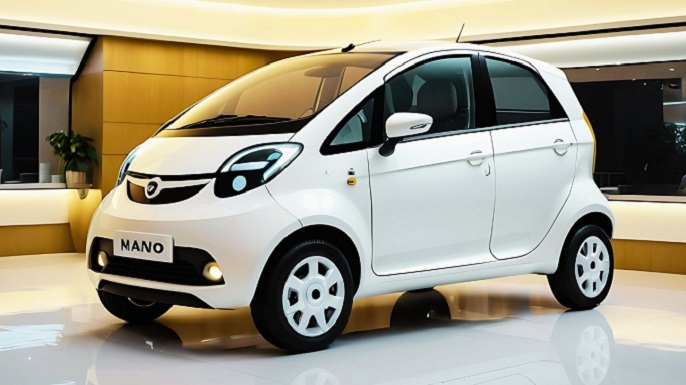Introduction: The Comeback of a Legend
The Tata Nano<b style=”background-color: transparent; font-family: inherit; font-size: inherit;”> once hailed as the “world’s cheapest car,” is gearing up for a grand return in 2025. Originally launched to revolutionize urban commuting, the Nano became a symbol of compact efficiency and affordability. In 2025, Tata Motors aims to reintroduce the Nano with a completely fresh perspective, blending modern technology with the core values of simplicity, economy, and practicality.
A New Design Philosophy for the Urban Indian
The 2025 Tata Nano isn’t just a refreshed version of its predecessor—it’s a total transformation. The new Nano showcases a bolder stance, improved aerodynamics, and a more contemporary appearance. With reworked headlamps, sculpted sides, and a smarter grille, it now looks more like a premium compact car than an economy hatchback. The car’s increased proportions offer more interior room without compromising its ability to navigate crowded city streets.
Electric Powertrain: A Step into the Future
One of the most significant changes in the Tata Nano 2025 is its shift from petrol to electric. Tata Motors has made strong moves in the EV space, and the new Nano is expected to follow this trajectory. Powered by a compact lithium-ion battery, the 2025 Nano will be designed for urban commutes, offering a driving range of around 200-250 kilometers on a single charge—ideal for daily travel within city limits.
The electric motor will deliver modest yet effective power, ensuring a smooth and quiet driving experience while keeping running costs impressively low. The car is expected to support fast charging, allowing up to 80% charge in under an hour.
Interior Upgrades: Small Car, Big Features
While the original Nano kept interiors minimal to control costs, the 2025 version aims to deliver better comfort and modern amenities. The cabin will likely feature a digital instrument cluster, touchscreen infotainment system with smartphone connectivity, automatic climate control, and improved sound insulation. High-quality materials and ergonomic seating are expected to make the Nano feel more upmarket than ever before.
Despite its small footprint, smart space utilization will provide ample legroom and headroom for four adults. Storage options, foldable rear seats, and cleverly placed compartments will make it a practical choice for city dwellers.
Safety First: Enhanced Features for Peace of Mind
The 2025 Tata Nano is expected to be far safer than its predecessor. With Tata’s commitment to achieving higher safety ratings, the new Nano could come equipped with features such as dual front airbags, ABS with EBD, rear parking sensors, and a reinforced body shell. These improvements would help the car meet or exceed India’s latest vehicle safety regulations and crash test standards.
Affordability with Value
Tata Motors has always positioned the Nano as an affordable car for the masses. While the electric variant may cost more than the original petrol-powered model, it is expected to remain one of the most budget-friendly EVs in India. Tata’s focus will be on offering high value for money, ensuring that customers get premium features, cutting-edge technology, and sustainability—all at a competitive price.
Expected pricing could start from ₹4.5 lakh to ₹6.5 lakh (ex-showroom), making it a direct competitor to entry-level EVs and small ICE hatchbacks.
Target Audience: Who Will Buy the Nano in 2025?
The 2025 Tata Nano is perfectly suited for first-time car buyers, urban commuters, college students, and families looking for a reliable second car. With its compact size, low running costs, and eco-friendly nature, it caters to the needs of environmentally conscious individuals and cost-sensitive consumers alike. It will especially appeal to customers in metropolitan areas where traffic congestion and parking challenges make compact EVs highly desirable.
Nano 2025 could redefine affordable mobility once again.



